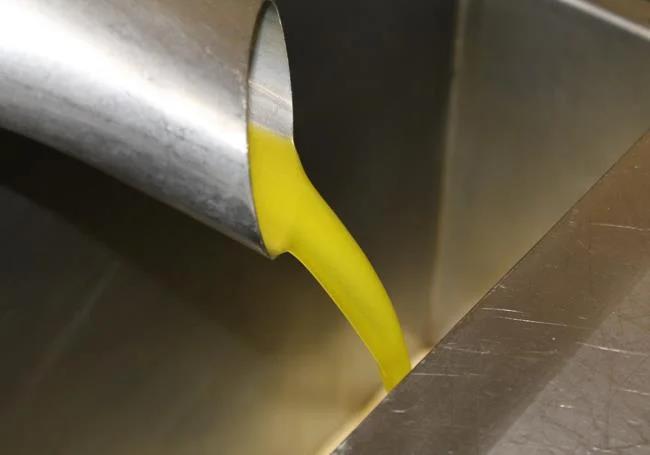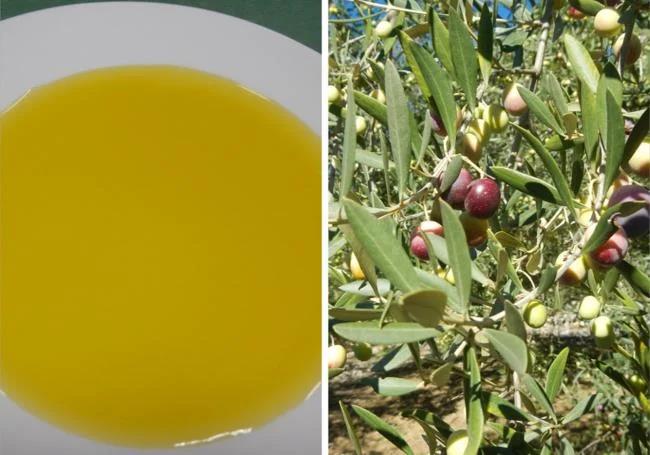A guide to the different types of olives used to make the very best oils in Malaga province
On a tour of the province, from the Serranía to the Axarquía you will come across many different local products, each with its own nuances. To help evaluate them, it is a good idea to identify the key varieties of olives used to make them
Malaga is a real melting pot in terms of the varieties of olives used to make extra virgin olive oil (EVOO, or AOVE in Spanish). In fact, despite being the smallest province in Andalucía, it boasts a great diversity, which has meant that today there is plenty of choice.
Although many olive oil mills continue to make so-called 'coupages' (blends of different varieties), the trend in recent years has been to produce single-varietal oils. Therefore, on a tour of the province, from the Axarquía to the Serranía, one can find many different olive oils, each with its own nuances. To evaluate them more thoroughly it is necessary to identify the main varieties from which they are produced. These are the most important ones.
Hojiblanca
It is probably the best known variety of olive in Malaga, as it is predominant in the Antequera region, which is also one of the areas that produces the most olive oil each season. As well as being used to make excellent EVOO, this variety is also used as a table olive. As 'liquid gold', its organoleptic properties (mostly its bouquet, taste and appearance) will always depend on the season and the time of harvesting. Thus, they can be milled from early harvesting (with a more accentuated bitterness and pungency), from veraison (at the onset of ripening, a softening of the olive and sometimes a slight change in colour) or ripe olives. They are usually ideal for raw consumption and frying. Today there is a wide variety of olive oil mills that make single-variety olives with hojiblanca. These include Molino del Hortelano (Casabermeja), DCOOP, Hacienda de Colchado, Finca de la Torre and Cortijo El Solano (Antequera), Finca Rosa Alta and Finca La Tortaíta (Archidona), Garo (Campillos), Terraverne (Teba), Cerro Castillo (Sierra de Yeguas), Bravoliva (Ardales), Aceites Tapia (Villanueva de Tapia), Montexaquez (Montejaque) and Molino Jabonero (Villanueva del Trabuco).

Verdial de Vélez
This variety is native to the province of Malaga and is particularly abundant in the Axarquia region. Known as the verdial de Vélez, it has some very unique characteristics that make it different and very exclusive to this area. As well as being somewhat later than other olives - it is harvested as late as the beginning of spring - it has certain organoleptic peculiarities that make it different. Thus, for example, these oils tend to have a fruity, even sweet flavour, with practically none of the bitterness of other varieties. However, in the last few years, early harvest monovarietals have been produced, which are surprising for the different nuances they offer. Today, to buy oils made only with this variety you have to go to the Axarquía area, to be specific, to oil mills such as San José Artesano (Mondrón), San Isidro Labrador (Periana), Santa Catalina Mártir (Arenas), Los Romanes and Puente Don Manuel (La Viñuela) or Rioliva, among others. There are also those in the Antequera region, such as the one in Molino del Hortelano (Casabermeja).
Nevadillo blanco
In the Axarquía, apart from the verdial de Vélez, the nevadillo blanco (in some areas also known as 'lechín') is also present, and is used to make oils that are very popular in the municipalities of the easternmost part of the area. These are olive oils with little pungency and bitterness. In the village of Torrox itself, Aceites Nevaíllo is the only olive oil producer that bears the name of the variety, but it is not the only one producing from this variety as it is also produced in La Recíproca (Cómpeta) and Sierra Tejeda (Canillas de Aceituno).
Manzanilla aloreña
This oil is made from the variety that in this province is best known for having on the table at mealtimes so it can be added to food according to personal taste. It is a protected brand under the DOP Aloreña e Málaga, as long as it meets a series of requirements to hold that status. As an olive oil, it can be found in many 'coupages', but there are also some mills that make single variety oils from it. These include La Molina and Manzaoliva (Álora), Molisur and Molino de la Paca (Alhaurín El Grande) and El Molino de Guaro (Guaro).

Picual
It is the most abundant variety in such an olive-growing province as Jaen, but its presence is quite abundant in Malaga province in areas as different as Axarquía and Vega de Antequera. It should not be confused with the picuda variety of olive. In this case, the oils are usually spicier than others from Malaga province. Among the companies currently selling this variety are La Samiaja (Archidona), Terraverne (Teba), Monsalud (Alfarnate), Oro Al-Ándalus and Molino Don Félix (Ronda) and San José Artesano (Mondrón).
Arbequina
It is common to find this variety in many 'coupages' in the olive oil mills of inland Malaga, but there are also some that make high quality single-varietals. This is the case with Terraverne (Teba), the Almazara de Ronda, the Sierra de Yeguas cooperative and Finca La Torre (Antequera).
Koroneiki
Its name gives away its foreign origin as it is a variety native to Greece that has adapted perfectly to the sweeping plains (Vega) of Antequera. For the last decade it has been produced and marketed by the family business 'Cortijo El Solano'. This oil is initially light, with fruity touches, but with a long aftertaste and a bitter touch that make it unique and special. Today the single variety of koroneiki can be found in many hostelries and gourmet food shops not only in Malaga but also in Madrid.

Ocal
This olive is a real rarity in the province of Malaga. Today there is only one family business that makes and sells it. This is Gotas de Gloria, located in Antequera. This variety, brought from La Rambla (Cordoba), is actually native to Castilla León. Curiously, this olive, seasoned and preserved in jars, is very popular in Valencia.
Vidueña
This is the olive variety used to produce the most awarded EVOO from the family-run SAT El Labrador olive oil mill in Fuente de Piedra. According to the company, the origin of the rootstock is in the lechín de Sevilla. From there, with different grafts made in this part of the Antequera area, this variety arose, although at this mill in Fuente de Piedra they say that it is more like "something bred from the land", because it is something very unique and not easy to explain.
Other olives that can be found in oil mills across Malaga, either as a single variety or as a 'coupage', are the picuda, zorzaleña, pico limón, cornicabra, gordal, campiñesa and gordalilla. To these could be added acebuchina, the fruit of the wild olive tree, which is currently milled in the province of Malaga only at Molino del Hortelano (Casabermeja) and Aceites Mudéjar (Monda).

